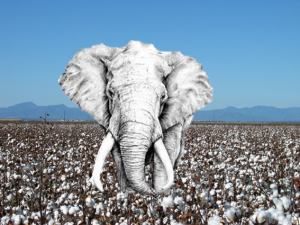On the 5th of August Dr Knox is talking ‘Soil’ in the afternoon session of the cotton collective. The premise for the session is compaction, which occurs when something becomes denser. Work being done within the Cotton Hub at UNE has been investigating irrigation recharge issues and a lack of root exploration of the soil profile. These issues appear to relate to a loss of porosity, which makes the soils denser and is therefore related to compaction.
The work being done at UNE, with CRDC funding and data support from Goanna Telemetry, has indicated that water is a critical part of the issue that is being observed across several cotton valleys. Compaction is often blamed on the machinery that is used in the system and certainly it has a role. The impact of a John Deere 7760 exerting around 594 000 to 756 000 N/m2 is ten times higher than the ~54 000 N/m2 that an average elephant would exert, which in turn is about 50 times more than the downward force that the water in each irrigation applies. However, water affects the soils shrink/swell status, plasticity, amount of dispersion and slacking and these changes appear to be causing the issues in the ‘throttle zone’, originally coined by Chan and Hodgson in 1984, which are leading to the observed issues.
The importance of each of these soil properties to the issues being observed is still being investigated, but some suggestions on ways to avoid them establishing or remediating once occurred will be discussed.
Cotton field elephant modified from a line drawing by Linda Weil (Pinterest.com) and backgound photo taken by Oliver Knox.



Recent Comments